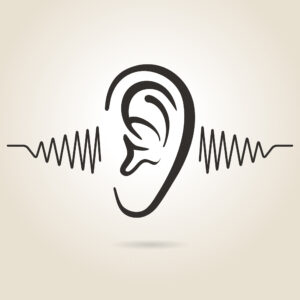
ear icon on light background
If you’ve been following this blog for a while now, you know that we’re very interested in how vagus nerve stimulation can be used to help treat certain health conditions. Our focus has mainly been on how vagus nerve stimulation can help with migraine headaches, and we’ve always paid attention to see what new studies are saying about the potential treatment. A new study suggests vagus nerve stimulation may be helpful in treating some forms of chronic pain.
For the study, researchers at the Medical University of Veinna, the Vienna University of Technology and other institutions used what’s known as high-resolution episcopic imaging (HREM) to generate histologic volume data from donated homan cadaver ears. They then used the data to reconstruct anatomical vascular and nerve structures, and a 3D model was used to calculate an optimal stimulation pattern of the vagal nerve branches.
Vagus Nerve Stimulation
It’s a little complicated, but essentially, researchers were able to find three points along the nerve that were within a close radial distance to a good portion of other nerves and vessels. By delivering a series of oscillating electrical pulses to these three areas, researchers believed they could help drown out pain signals.
“The blood vessels can be made clearly visible in patients by shining light through the ear. The nerves, however, cannot be seen,” said study co-author Professor Wolfgang Weninger, MD, of the MedUni Vienna division of anatomy. “Our microanatomical measurements on donated human bodies now tell us exactly where the nerves run in relation to blood vessels, as well as the average distance between blood vessels and nerves at certain important positions of the ear. This helps us to find the correct spot for placing the stimulation electrodes.”
Researchers then took the next step and tested their hypothesis on volunteers with chronic pain. The team said their understanding of pain was proven correct when the triphasic stimulation pattern was tested on real patients.
“In our computer simulation, it was shown for the first time that from a biophysical point of view, a triphasic signal pattern should be helpful, similar to what is known from power engineering, only with much lower magnitude,” said senior author Professor Eugenijus Kaniusas, PhD, of the Institute of Electrodynamics. “Vagus nerve stimulation is often a lifesaving option, especially for people with chronic pain who have already been treated with other methods and do not respond to medication anymore.”
Hopefully we can build on this understanding and really hammer out which types of chronic pain conditions could benefit from this triphasic stimulation of the vagus nerve. It certainly won’t be easy, especially considering that pain is unique to the individual, but it’s another step in the right direction for providing chronic pain patients with the right treatment options.
 Daith piercings have been showing success in helping to control migraine headaches. Now there is new research that seems to shine more light on what has been thought to be the mechanism that contributes to the success of this treatment. Research into dementia has recently been done with stimulating the ear with a slight bit of external and intermittent vibration. The research suggests that this may help prevent dementia. The mechanism of action is thought to be by stimulating the ear, a branch of the vagus nerve is also being affected and this is what is producing the results. Similar to what we assumed was happening with the
Daith piercings have been showing success in helping to control migraine headaches. Now there is new research that seems to shine more light on what has been thought to be the mechanism that contributes to the success of this treatment. Research into dementia has recently been done with stimulating the ear with a slight bit of external and intermittent vibration. The research suggests that this may help prevent dementia. The mechanism of action is thought to be by stimulating the ear, a branch of the vagus nerve is also being affected and this is what is producing the results. Similar to what we assumed was happening with the 